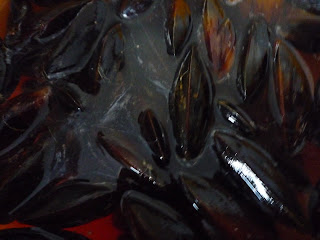Due to popular demand this is the brine recipe:
The All-Purpose Brine by Michael Ruhlman:
1 Gallon Water
1 Cup Kosher Salt (important that its not iodized)
1/2 Cup Sugar
Additional Optional Seasonings as desired (we used a head of garlic, 2 lemons, rosemary, bay leaves, peppercorns...).
Heat all the ingredients, but not to boil. Then let cool before submerging the chicken, and put in the refrigerator. It's important to keep the chicken fully submerged so use a plate that will fit into the stock pot you are using to weigh the chicken down (make sure there are no air bubbles under it though).
Leave the whole 3 lb chicken in the brine for about 12 hours then rinse, dry and leave uncovered in the fridge for at least an additional 3 hours. Ruhlman says that the chicken skin should feel kind of tacky when you take it out.
Then roast or broil as you normally would. You can add additional seasoning at this point too. It's finished when the internal temp is about 160 degrees.

















































